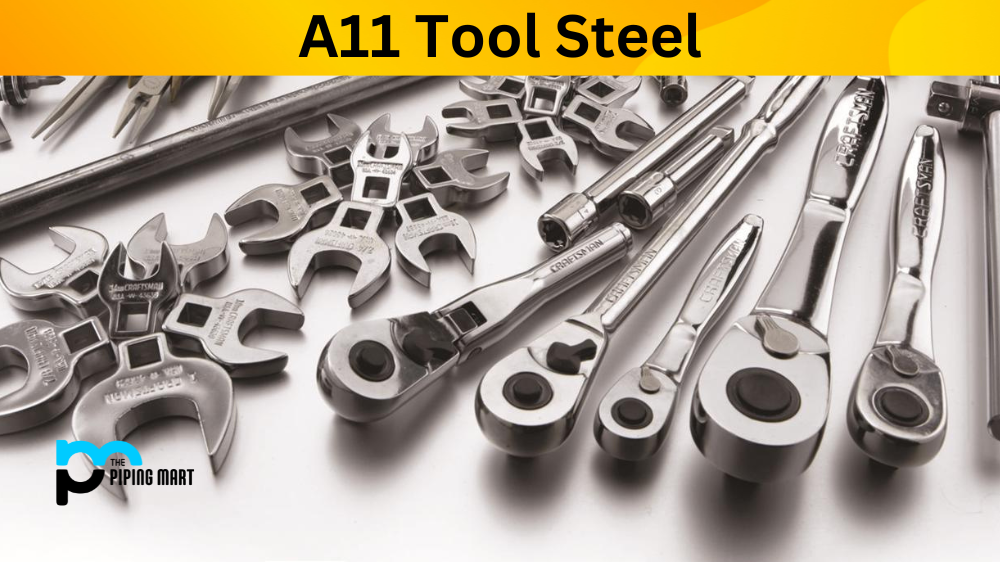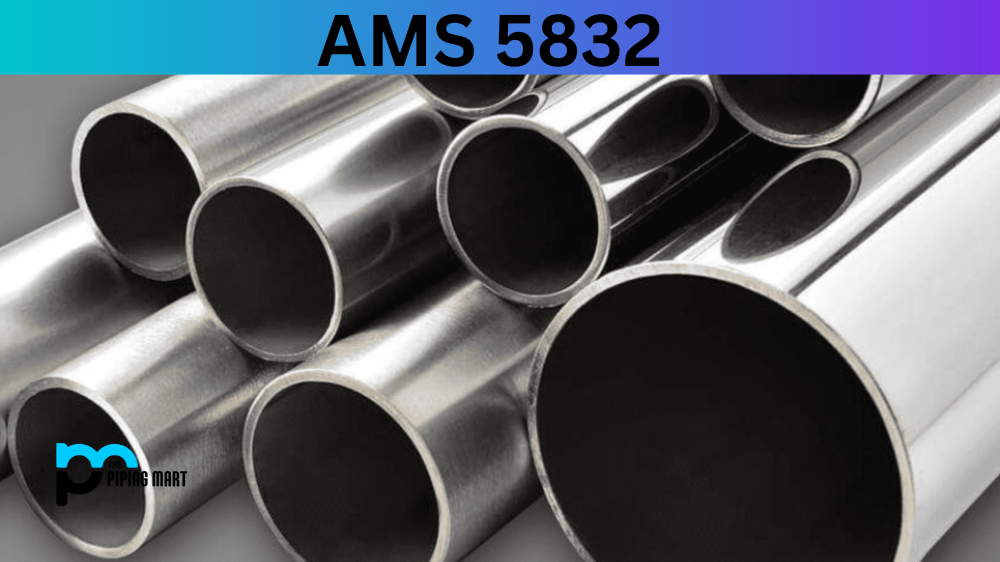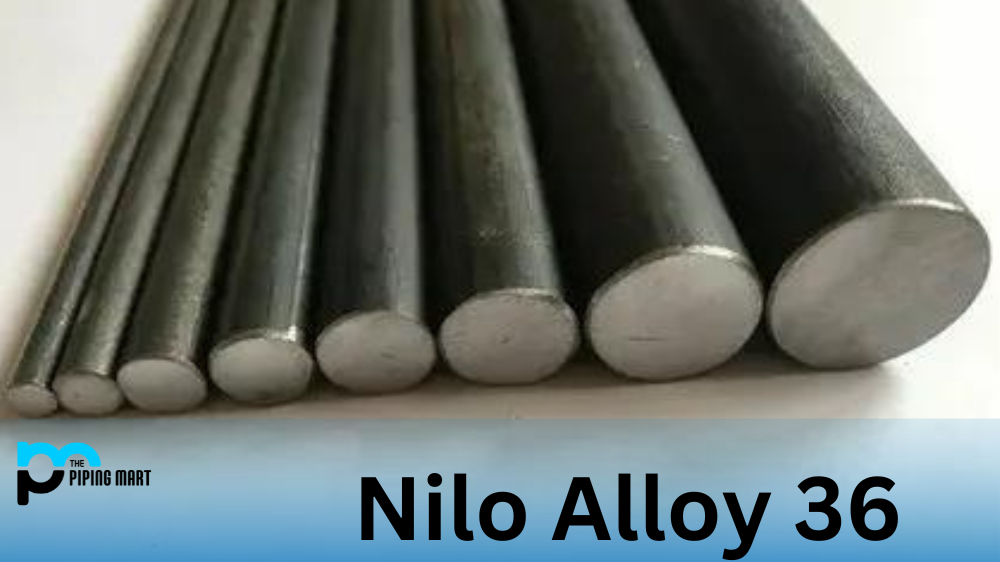Regarding tool steel, A11 tool steel is one of the most sought-after materials. This high-speed steel alloy offers excellent toughness, wear resistance, and machinability, making it ideal for various applications. A11 tool steel is known for its exceptional performance in high-stress and high-heat environments. This blog post will investigate the composition, mechanical and physical properties, uses, corrosion resistance, heat treatment, machining, and welding of A11 tool steel.
A11 Tool Steel Composition
A11 tool steel consists of 1.45% carbon, 5% chromium, 1% molybdenum, 1% vanadium, and 0.3% silicon. The high carbon content gives A11 tool steel excellent wear resistance, while the high chromium and molybdenum content provide toughness and corrosion resistance. The vanadium and silicon add to the strength of the tool steel.
| Element | Content (%) |
|---|---|
| Iron, Fe | 78.21 – 81.35 |
| Vanadium, V | 9.25 – 10.25 |
| Chromium, Cr | 4.75 – 5.75 |
| Carbon, C | 2.4 – 2.5 |
| Molybdenum, Mo | 1.1 – 1.5 |
| Silicon, Si | 0.75 – 1.1 |
| Manganese, Mn | 0.35 – 0.6 |
| Sulfur, S | 0.050 – 0.090 |
A11 Tool Steel Mechanical properties
A11 tool steel has excellent mechanical properties, with a typical hardness range of 60-62 HRC. The high hardness of A11 tool steel makes it ideal for applications where resistance to deformation and wear is essential. It also has a high elastic modulus and can withstand stress without deforming.
| Properties | Metric | Imperial |
|---|---|---|
| Tensile strength | 5205 MPa | 754900 psi |
| Modulus of elasticity | 200 GPa | 29000 ksi |
| Hardness, Rockwell C | 59 | 59 |
| Abrasion | 12 | 12 |
| Izod impact unnotched | 39.3 J | 29 ft.lb |
A11 Tool Steel Physical properties
A11 tool steel has a density of 7.3 g/cm3, a melting point of 1421°C, and a thermal conductivity of 24.1 W/m.K. It also has a high specific heat capacity, allowing it to retain shape and maintain strength even under high temperatures.
| Properties | Metric | Imperial |
|---|---|---|
| Density | 7.39 g/cm3 | 0.267 lb/in3 |
| Melting point | 1450 – 1510°C | 2642 – 2750°F |
A11 Tool Steel Thermal Properties
| Properties | Metric | Imperial |
|---|---|---|
| Thermal expansion co-efficient (@21-100°C/69.8-212°F) | 10.72 µm/m°C | 5.956 µin/in°F |
A11 Tool Steel Uses
A11 tool steel is commonly used in cutting tools such as knives, drill bits, and saw blades. It is also used to manufacture dies, moulds, and machine tools because of its strength, toughness, and wear resistance.
A11 Tool Steel Corrosion resistance
A11 tool steel has good resistance to corrosion due to the high chromium content present in the alloy. However, proper maintenance and storage are necessary to enhance the tool steel’s corrosion resistance.
A11 Tool Steel Heat treatment
A11 tool steel can be heat-treated to increase its hardness and wear resistance. Heat treatment involves heating the tool steel above its critical temperature and then cooling it down controlled using different quenching media such as oil, water, or air. This process helps prevent the tool steel’s microstructure, improving mechanical properties.
A11 Tool Steel Machining
A11 tool steel’s machinability is excellent when in its annealed condition. Machining becomes more challenging once the tool steel’s hardness increases after heat treatment. Carbide-cutting tools are recommended to achieve good results when machining A11 tool steel.
A11 Tool Steel Welding
A11 tool steel can be welded using various techniques, such as gas tungsten arc welding (GTAW) and gas metal arc welding (GMAW). However, the tool steel’s high carbon content makes it prone to cracking, so preheating and post-weld heat treatment are necessary.
Conclusion
A11 tool steel is an exceptional tool that offers excellent performance in high-stress and high-heat environments. Its unique composition, mechanical properties, physical properties, uses, corrosion resistance, heat treatment, machining, and welding characteristics make it ideal for various applications. When properly maintained and used, A11 tool steel can last for decades. Understanding its properties and applications can help engineers and technicians decide which materials to use for their projects.

Abhishek is a seasoned blogger and industry expert, sharing his insights and knowledge on various topics. With his research, Abhishek offers valuable insights and tips for professionals and enthusiasts. Follow him for expert advice on the latest trends and developments in the metal industry.




